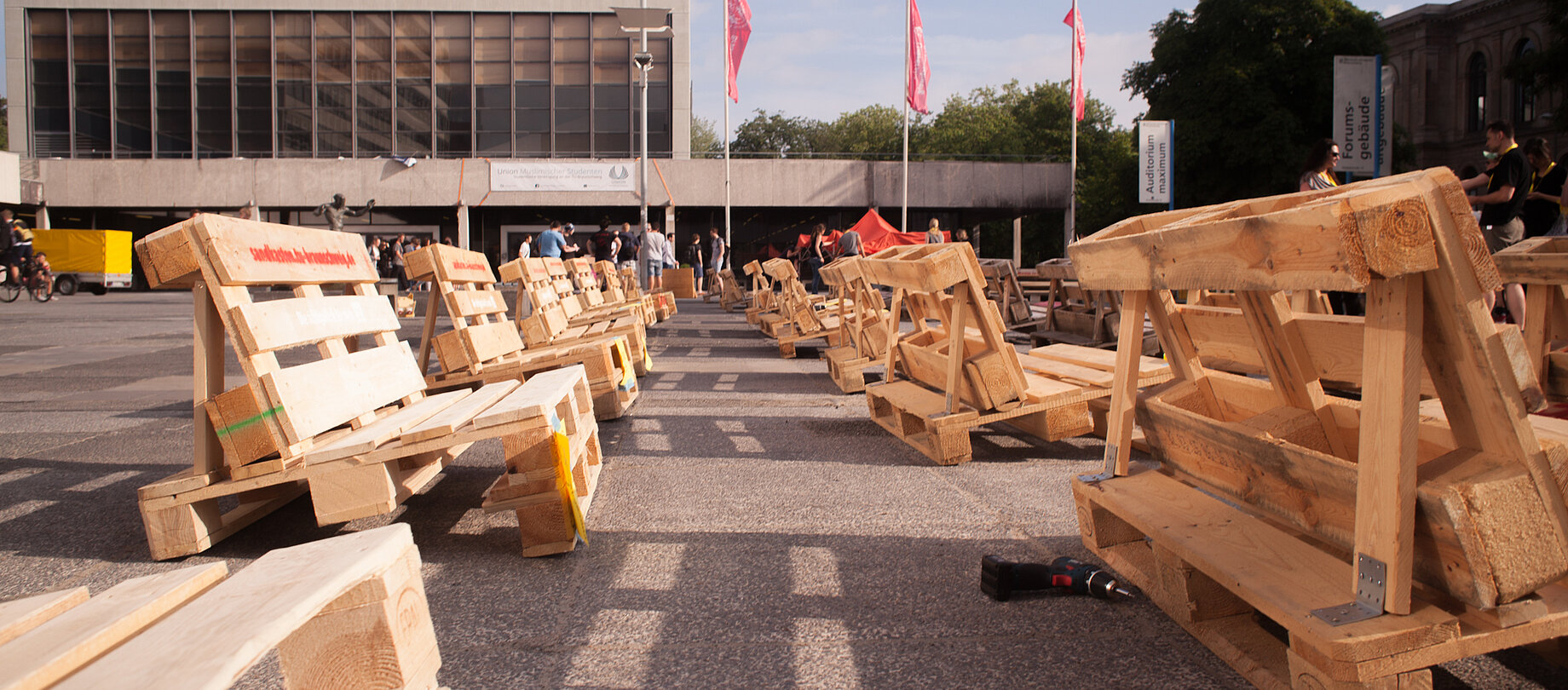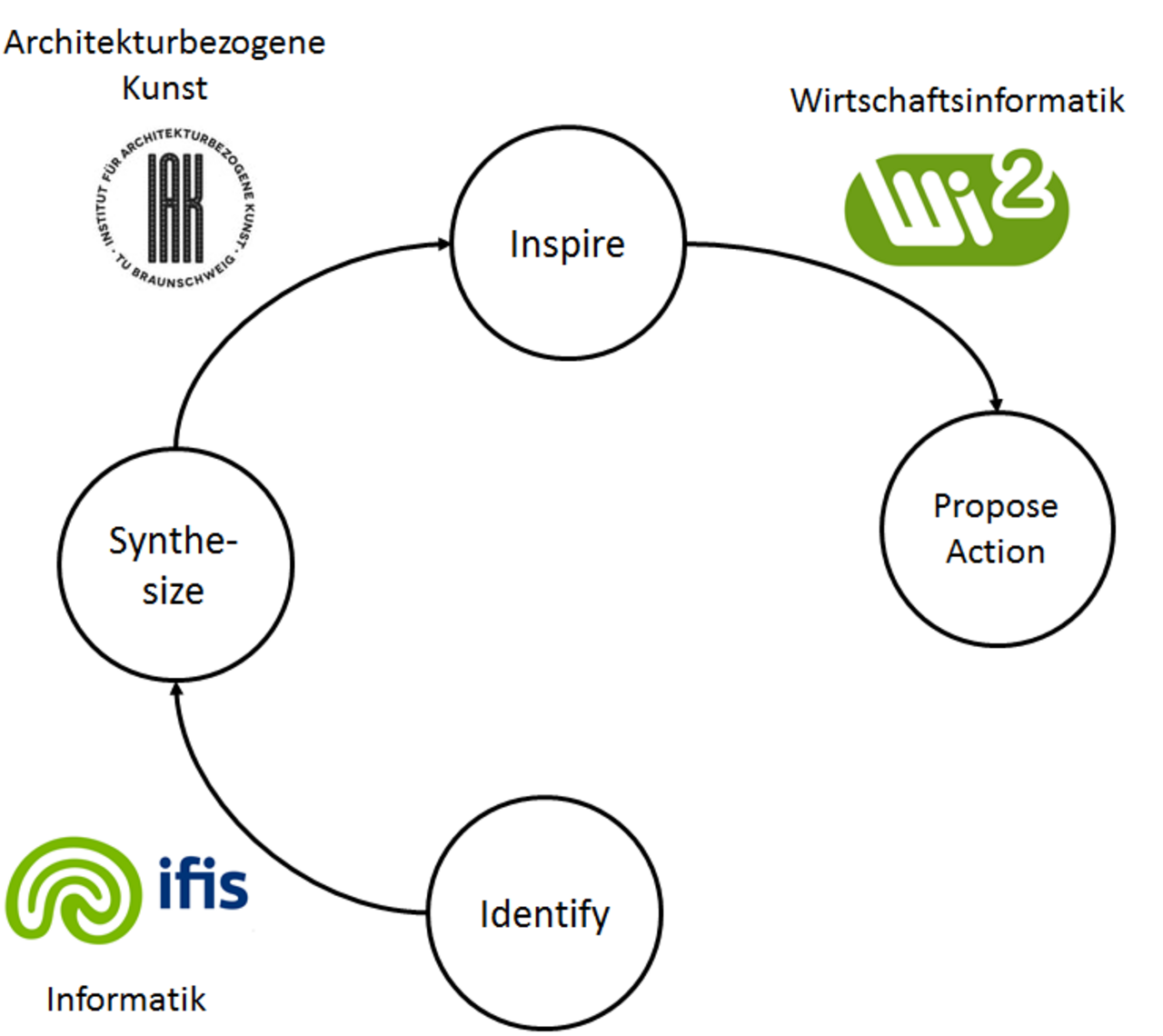
The Art of Participation – A Journey begins
Due to Corona the topic of digitization is getting even more traction. We talk about home office, digitization of schools and the slow process of all of the before mentioned caused by missing IT specialists1. However, we rarely ask if the digitization of our life is sensible and will have a benefit for the society.
This is only one of a huge number of problems: Climate change and the need for sustainable actions; increasing polarization of society and the alienation especially in cities. Where to start?
Where do we stand as a society?
The degree of digitization we have is already influencing our coexistence in such a way that we can and should think about transitioning into the post digital age. Matthias Horx (a future studies scholar) wrote in one of his articles2 what post-digitality could mean. The quintessence of the article is, that post-digitality means the end of ‚digital first‘. We should use digital goods and services where it is sensible but we should not think, that digitization does always improve our lives regardless of the area it is used in. So, as a society, we should think about the degree of digitization and its impact in order to agree on a certain level.
Of course, digital platforms and tools can help to initiate positive change in society, e.g. in connecting people or increase participation of citizens in urban areas. The „Sandkasten“ project of the TU Braunschweig3 can be seen as an example for an bottom-up project platform.
Public participation enables citizens to improve their living environment and frees them from the role of a consumer. Additionally, the identification with our environment and in a more active role in urban projects, the pressing problems mentioned above can be tackled easier (e.g. the reuse of materials and increase in sustainability on the lower levels of society). For us (as a project team), empowering citizens to co-create their living environment in a post-digital mindset is a worthwhile concept.
What do we want to achieve?
In the coming years we, as an interdisciplinary team, want to work to increase post-digital participation in the local area. Sounds like an abstract concept? Absolutely! So, let's go into a little more detail.
Our individual projects can be described as a process:

Our co-existence is shaped by the zeitgeist, i.e. a set of viewpoints regarding different topics where each viewpoint follows a certain narrative. In psychology, narratives are viewed as a mechanism which shapes reality or at least influences the perception of our environment4,5. Concrete manifestations of narratives are pervasive in the public discourse. The computer science part of the project aims to analyze the public discourse and to find hints regarding current narratives (identify). For example, which narratives regarding sustainable projects are actually shared? A system which can answer questions like this in large scale can help to identify problems or show potential improvements in the urban area (and beyond).
Imagine we identify a problem and find a solution. The next step would to find supporters and actually win their support. The latter may be achieved by generating a new narrative tailored for the target group (i.e., tailored in a way which makes it easy to identify with).7
A core problem will be sustainability. The R4 project of the Institute of Architecture Related Art will develop new ways to reuse materials. Narratives supporting sustainability can be used and expressed in an artistic way. A combination of analog and digital ways is of course a possibility in this regard. If the narrative and transportation (synthesize) are strong enough, the target group should be inspired.
But, one step remains to be done. How to actually propose action to the target group? In the past, many platforms for citizen participation have been implemented. Many of them had a similar objective, but which ones were successful? And if they were successful, why? The business information part of the project will analyze which success factors are relevant for participation platforms and how to integrate this knowledge to take up the stamina from the inspire phase.
The journey will continue in this blog.
Recommended literature:
1. Ein Beispiel: https://www.heise.de/news/Unternehmen-koennen-offene-IT-Stellen-nur-schwer-besetzen-4906561.html
2. Horx, Matthias (n.d.): Das Postdigitale Zeitalter. Neun Thesen zur Digitalen Krise – und wie wir in Richtung auf eine Humane Digitalisie- rung vorankommen.
Online: https://www.horx.com/33-das-postdigitale-zeitalter/
3. https://www.sandkasten.tu-braunschweig.de/
4. Bruner, J. (1991). The narrative construction of reality. Critical
inquiry, 18(1), 1-21.
5. Bruner, J. S. (1990). Acts of meaning (Vol. 3). Harvard university press.
6. Green, M. C., & Brock, T. C. (2000). The role of transportation in the persuasiveness of public narratives. Journal of personality and social psychology, 79(5), 701.
7. Escalas, J. E. (2007). Self-referencing and persuasion: Narrative transportation versus analytical elaboration. Journal of Consumer Research, 33(4), 421-429.







